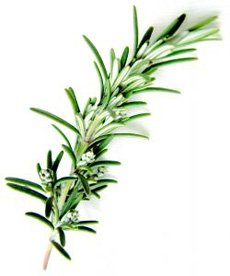TIP OF THE DAY: Using Delicate Versus Hearty Fresh Herbs
| There’s a science to using fresh herbs. You have to know what category they fall into: delicate or hearty. This refers not to the flavor, but to the sturdiness of the plant and thus its durability in cooking.
Delicate herbs (basil, chives, cilantro, dill and parsley, for example) are generally chopped, snipped, or torn and added at the end of cooking to provide the most flavor impact. Don’t add them too soon in the cooking process. Heartier herbs like bay leaf, oregano, rosemary and thyme can be added earlier in the cooking process to allow their flavors to completely infuse into the dish. They can be added whole and removed before serving. Except for bay leaf, though, which must be removed before serving (biting into it isn’t appealing), snipping sturdy herbs into the dish leaves green flecks that add to the visual beauty of the dish. |

You can tell by looking at rosemary that |
|
| If you’re not sure how to tell a delicate herb from a hearty one: The woody stems of hearty herbs are a dead giveaway.
Should you buy organic herbs over conventional herbs? In some cases, yes. Read our article on organic herbs and spices.
|
||


